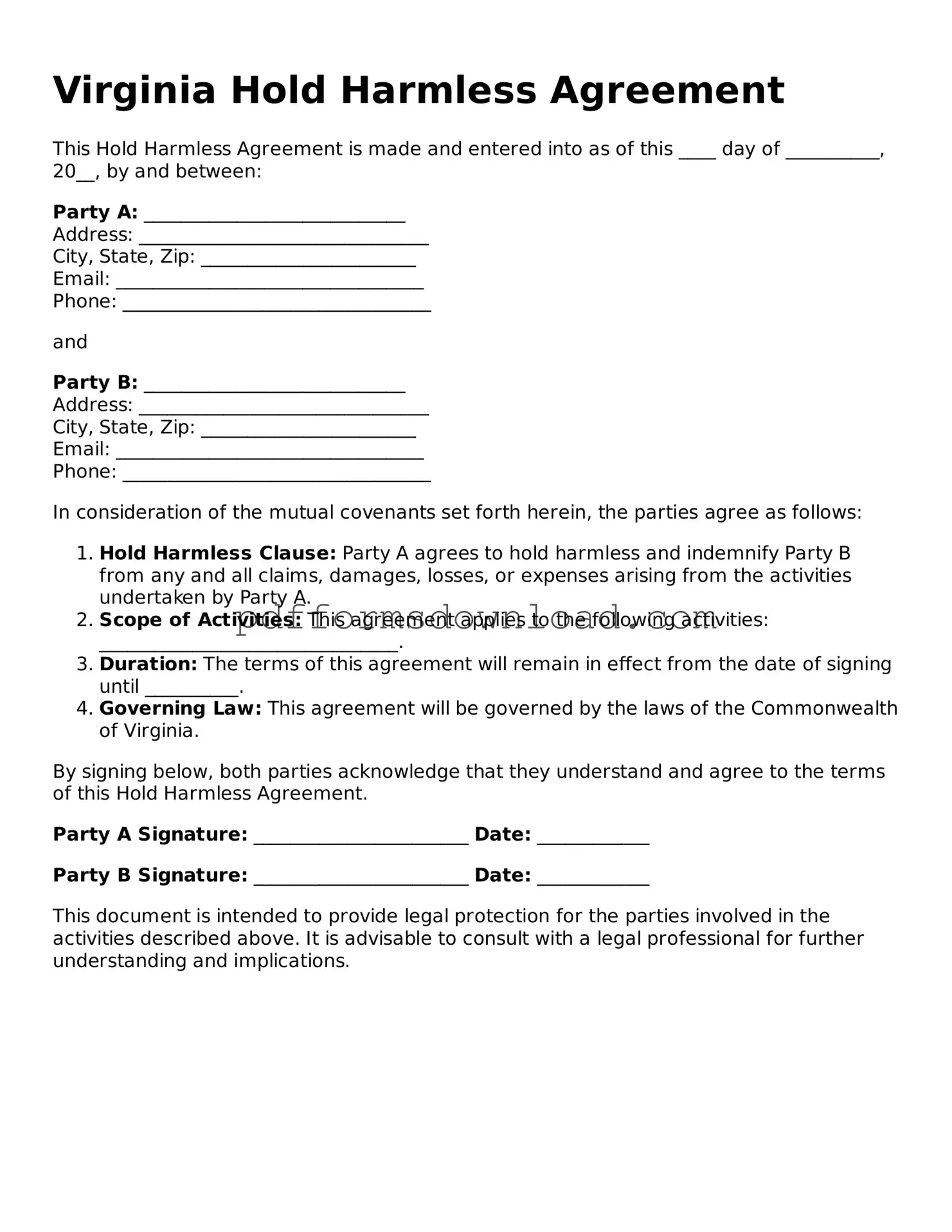What is a Virginia Hold Harmless Agreement?
A Virginia Hold Harmless Agreement is a legal document designed to protect one party from liability for any damages or injuries that may occur during a specific activity or event. This agreement essentially states that one party agrees not to hold the other responsible for any losses or claims that arise. It is commonly used in various contexts, such as construction projects, rental agreements, and events where participants may be exposed to risks.
Who typically uses a Hold Harmless Agreement in Virginia?
Various parties may utilize a Hold Harmless Agreement in Virginia. This includes property owners, contractors, event organizers, and businesses. For instance, a contractor may require this agreement from a client to ensure that the client will not hold the contractor liable for accidents that occur on the job site. Similarly, event organizers often ask participants to sign this agreement to mitigate risks associated with the event.
What are the key components of a Hold Harmless Agreement?
A well-drafted Hold Harmless Agreement typically includes several essential components. First, it identifies the parties involved, clearly stating who is granting the protection and who is receiving it. Next, the agreement outlines the specific activities or events covered. Importantly, it should detail the scope of liability being waived, ensuring that both parties understand what is included. Finally, the agreement often includes a section on governing law, specifying that Virginia law will apply to any disputes arising from the agreement.
Is a Hold Harmless Agreement enforceable in Virginia?
Yes, a Hold Harmless Agreement can be enforceable in Virginia, provided it is drafted properly and meets certain legal requirements. For the agreement to hold up in court, it must be clear, unambiguous, and not violate public policy. Courts generally uphold these agreements unless they are deemed overly broad or if they attempt to waive liability for gross negligence or willful misconduct.
How can one ensure that a Hold Harmless Agreement is properly executed?
To ensure that a Hold Harmless Agreement is properly executed, it is crucial to follow several best practices. First, both parties should read the document thoroughly and understand its terms. It is advisable to have the agreement reviewed by a legal professional to confirm its enforceability. Additionally, both parties should sign and date the agreement, and it is often beneficial to have witnesses or notarization to further validate the document. Keeping a copy of the signed agreement for future reference is also recommended.
